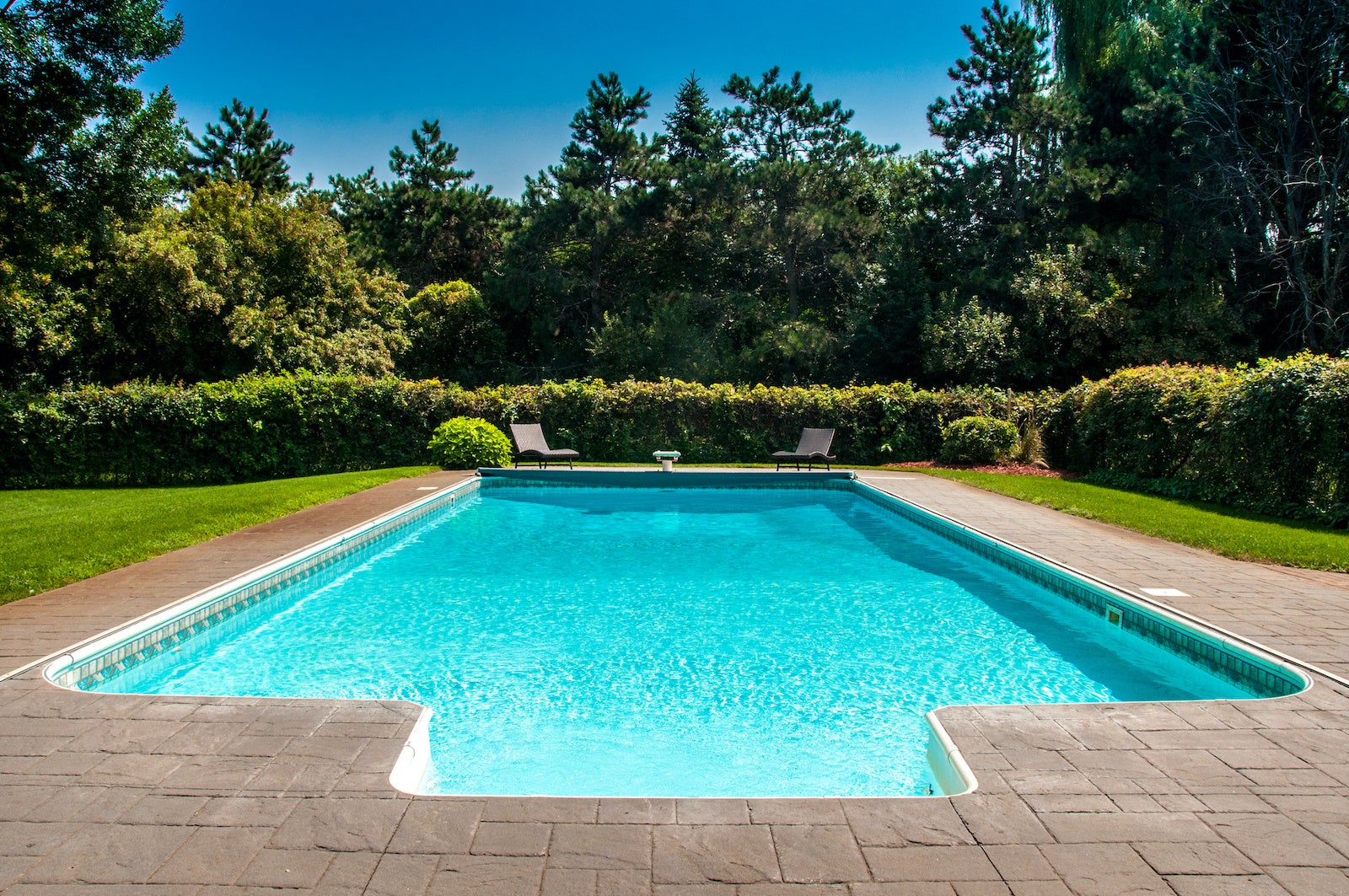Two facts: One, we’re in a hot market for companies who want to go public. Two, we’re in a very hot market for companies in the home space who want to raise money. No shock, then, that pool equipment manufacturer Hayward made its Wall Street debut last week, listing roughly 18 million shares on the New York Stock Exchange for $17 a pop (the stock briefly pumped up to $17.63 in the afternoon, then settled back down to $17.02 by the closing bell).
CEO Kevin Holleran, speaking to Business of Home from the floor of the NYSE on listing day, was buzzing with enthusiasm. Hayward’s motivations for going public are specific to the company—it intends to use roughly half of the funds to repay debt—but there’s no denying that the manufacturer is tapping into market enthusiasm spurred on by COVID. “If there was an influence [to the timing of the IPO],” says Holleran, “it’s how hot the outdoor living category is right now.”
For designers who spent last summer trying desperately to round up outdoor furniture for clients doing a backyard glow-up, that statement will come as no surprise. As American consumers looked to revamp their homes (and outdoor gatherings were deemed far safer than indoor soirees), there was a rush to buy up every conceivable product that would make backyards more hospitable.
A small example that represents the broader market: Outer, a D2C startup selling weather-resistant outdoor furniture, saw its digital shelves emptied before the summer even got started. “By the middle of April, we sold out of everything forecast through May, and we were just out of stock,” co-founder Terry Lin tells BOH.
Lin and his co-founder Jiake Liu are optimistic that the market for backyard furniture will last beyond the pandemic, especially as the “Great Reshuffling” has seen so many Americans, freed by open-ended work-from-home policies, continue to relocate from urban to suburban and rural areas. However, the demand for outdoor furniture in 2021 is still somewhat speculative, whereas there’s hard evidence to suggest the pool boom has legs.
For example, the number of American pools constructed in 2020, roughly 94,000, is well below the long-term median of 113,00. That discrepancy, says Holleran, is partially due to the same labor and supply chain issues plaguing the furniture and appliance business. However, the pool industry was also subject to another issue: local governments essentially shutting down nonessential functions, like approving permits for backyard pools.
“There was greater interest than the [number of pools that actually got built in 2020],” he adds. “With so many people working remotely and townships shut down for months at a time, there was some capacity constraint. … Make no mistake about it, this is an element of the home that has broad-based appeal right now. This has runway into the future. For all those folks who are concerned about [the number of pools built in 2020], we’re still well off the demand.”
So what happens when local governments get back in action in time for the building season? Presumably, most of the backlogged pool permits that were filed in the thick of COVID’s spring surge will be approved. The summer of 2021 may well be the summer of the pool. “It’s going to be an up year, no doubt about it,” says Holleran. (Whether all those pools will be easily built is another story: A top New York landscape architect, speaking to BOH off the record, suggested that the travel disruptions caused by COVID had led to a labor squeeze, as the immigrant workforce that normally would be doing landscape and pool work had been stranded by travel restrictions.)
Interestingly, even if labor and materials are able to meet demand, a 2021 pool boom will likely still be far below record totals. The reason? Those numbers were surpassed in the run-up to the 2008 recession, as developers taking advantage of low mortgage rates and predatory lending arrangements built endless rows of tract housing with backyard pools. The low-to-medium-range pool, says Holleran, hasn’t really come back. But the premium-tier, high-end pool never fell off as far, and is growing steadily.
The pool industry may never crack those inflated pre-2008 numbers. However, even if the pandemic rush subsides, Holleran is confident that the long-term trends are going in Hayward’s favor. “I know there will be some degree of normalcy, but the trends that were driving [an interest in spending on outdoor living] pre-COVID are still there,” he says. “Just look at the de-urbanization. … Whether it’s boomers who are continuing to invest in their homes, or millennials who are getting out of urban locations, … there’s a headwind there.”
Homepage photo: ©Updesh/Adobe Stock





























